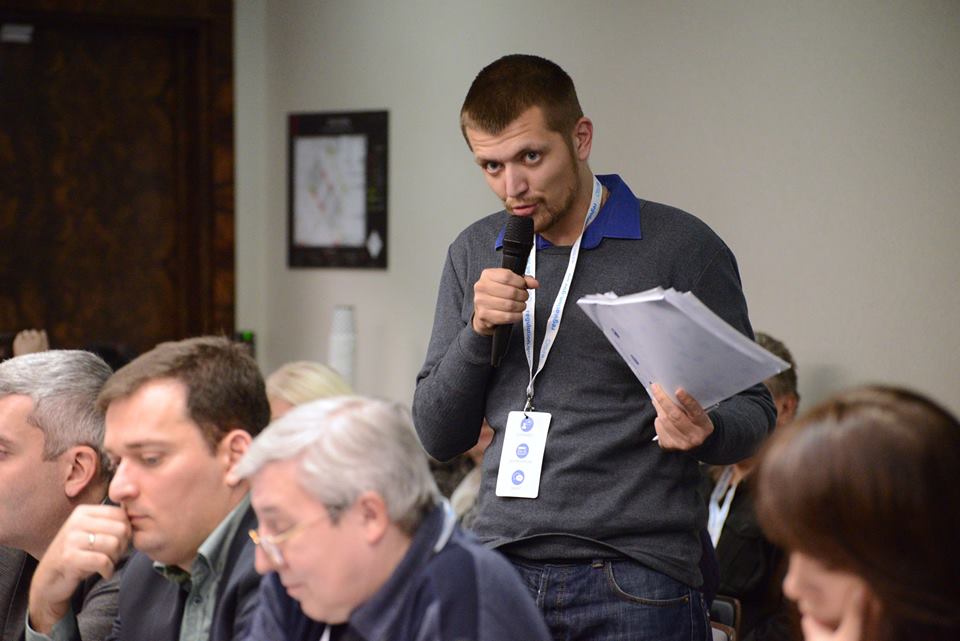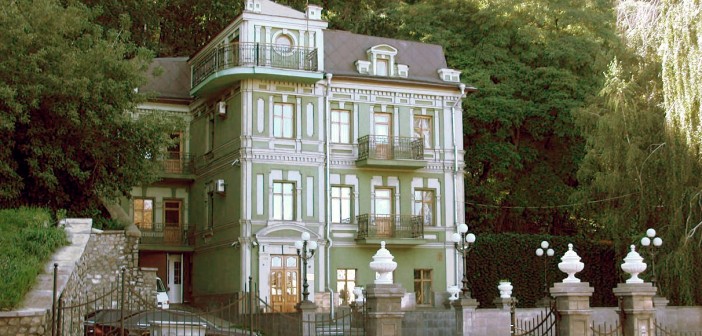Source: kievvlast.com.ua.
Scandals and battles caused by barbaric constructions in the territories of cultural heritage are becoming a “landmark” of Kiev instead of the heritage itself. According to careful estimates of the KV, more than 50 architectural monuments has disappeared in the capital over 15 years. Including the Sennoy market, the Brodsky’s mill, the side wing of the architect Kazansky, Gostiny Dvor, the gate and the fence at the entrance to the Lower Lavra, protection embankments of the National Historical and Architectural Museum Kiev Fortress much loved by Kiev citizens and guests – this list could go on and on and on.
Good deeds were almost punished
The KV has found out that an independent non-governmental organization “Better Regulation Delivery Office” (BRDO) held a roundtable “New construction in the territories of cultural heritage sites”.
The following topical issues were announced for discussion at the roundtable: how to improve the effectiveness of control over the cultural heritage preservation, how to promote the development of historical sites, how to build a system of quality assessment of the impact of construction facilities on cultural heritage and create transparent rules for business.
During the roundtable, the BRDO team presented the Green Paper “Rolling review of the state regulation quality: “New construction in the territories of cultural heritage sites”.
The Green Paper includes a system analysis of state regulation. According to the authors of the document, the analysis demonstrated the following: the existing regulatory environment hinders the development of historical areas, creates a significant burden on business and does not guarantee the protection of cultural heritage.
According to BRDO, land development rules are not actually regulated in 80% of settlements located in historical areas of Ukraine – only 86 of 401 settlements have approved historical and architectural plans.

Photo: Aleksey Goncharuk, Head of the Better Regulation Delivery Office, and Olga Balitskaya, deputy of the Kyiv City Council.
The BRDO Office, the mission of which is to facilitate the creation of effective regulation and the improvement of economic freedoms in Ukraine, intentionally decided to gather activists defending historical heritage, government officials working in this area and construction business representatives before introducing any initiatives into the current legislation.
The purpose of the roundtable was a constructive discussion of legislative initiatives outlined in the Green Paper and the establishment of a working group to develop balanced changes that would meet the needs of all parties.
However, the public reaction largely was extremely negative. The presence of the Deputy Minister of Culture of Ukraine Tamara Mazur, whose name is directly associated with the destruction of historical heritage among defenders of cultural heritage, as Mrs. Mazur signed permitting documents for a number of scandalous new buildings, against the construction of which there are systemic protests, became a trigger.
Plus – construction business representatives. Today, the construction business is far from being a creation story in the public eye, and together with officials working in this area is a synonym for the destruction of the city’s architectural heritage.
Now the reputation of any real estate developer, even the most law-abiding and socially active, “reflects” the reputation of “malicious developers” for obvious reasons.

Photo: The roundtable. There are all parties: activists, architects and officials.
And although the BRDO Head Aleksey Goncharuk drew the attention of the audience to the fact that they gathered together for the public dialogue before taking any further steps to implement the Office’s initiatives for several times, the public insisted that this initiative was for the sake of business responding to the proposal to join the working group and implement measures on cultural heritage preservation in a civilized format.
Surprises are just around
The excitement of activists and architects attended the event was triggered by the BRDO’s initiative to cancel historical and urban planning verifications (HUPV).
They were not enthusiastic about the argument that approved historical and architectural basic plans (HABP) will regulate construction activities in historical territories. Viktor Trofimenko, the activist from Poltava and representative of the NGO Save Poltava said that even the HABP would not guarantee the protection of historical heritage citing a case of adding a restaurant and hotel complex to the building of the Nobility Assembly, which is the monument of national importance.

Photo: Viktor Trofimenko, activist of the NGO Save Poltava.
The former deputy of the Kiev city council and activist Elena Yeskina drew attention to the fact that, first of all, it was necessary to comply with the existing legislation and introduce real measures to punish violators.
The Tamara Mazur’s speech only served to add fuel to the controversy. She said that they (the Ministry of Culture) “had a drafted act, which was being considered by the government committee”.
“We are waiting for the approval of the Ministry of Regional Development and hope to obtain it soon. If the act is adopted before the new year, HUPV will be abolished in those settlements where there are historical and architectural basic plans next year, and in 2019, they will be abolished as a concept in general,” she said.
At the same time, the official complained that authors of the Green Paper “did not coordinate their work with the relevant ministry”.
Olga Balitskaya also pointed out that the current HUPV instrument was inefficient:
“I have not seen a single problematic construction project with no valid historical and urban planning verification over the past two years. There is the only advantage: these documents have a validity, and I hope that the ones expiring soon will no longer be extended.”
It should be noted that basic plans were adopted only in 20% of 401 settlements. In Kiev, the process is critically delayed – the document has not been adopted yet. The reason is a long-standing story related to dealing with comments from district architects.
According to the director of the Ukrainian State Institute of Cultural Heritage Olga Plamenitskaya, the historical and architectural basic plan developed by the institute was provided to the customer, which is the municipal association “Institute of General Plan of the Kyiv City” last December. After considering received comments on expanding protected areas, the document was again sent to “Kievgenplan” on June 18. The HABP was amended based on the comments received from district agencies two more times. The document was coordinated with the developed detailed plans of territories.
According to Mrs. Plamenitskaya, the document was amended three times because of the detailed plans of territories, some of which have not even been approved yet. The director of the Ukrainian State Institute of Cultural Heritage believes that the process of adopting the HABP is hindered by the Department of Urban Development and Architecture at the Kyiv City State Administration.
Georgiy Dukhovichny, who was the speaker of the Union of Architects of Ukraine, accused the authors of the Green Paper of being committed in favor of the construction business and said that proposed legislative initiatives would lead to the destruction of cultural heritage objects due to the lack of state monitoring and control mechanisms.
It is fair to say that the still existing state control has failed to preserve architectural monuments destroyed in the city, has not saved the city from vulgar terraces on historical buildings and sometimes clearly encourages corruption.

Photo: the side wing of the architect Kazansky destroyed to build a hotel in January 2010
“I have not read, but I criticize”
The author of this article had this impression after the roundtable. We can and should understand the activists – the above are data on huge and irrecoverable losses of historical heritage just in Kiev. Moreover, immediate interests of the construction business caused more harm than good to other real estate development companies aimed at long-term work in the market.
This is because the people now mostly perceive the word “developer” extremely negatively, and any construction site is perceived with hostility, no matter how legitimate and appropriate this construction is.
The main task of the Better Regulation Delivery Office is the deregulation of business, the removal of state barriers and the elimination of corruption “gaps” in the legislation. Since the construction issue is closely connected with social problems of society and systemic violations of regulations and laws, which last for more than a year, the organization took a risk and invited both the public, officials, and business representatives.
The “Green Paper” is a long document with 236 pages. For example, the measures proposed by the BRDO Office to preserve the historical heritage include the following:
- to make information on boundaries of the monument’s territory, its protection area and legal regime publicly available on the Internet. Similarly – to ensure adding these data and project site data to a public cadastral map;
- to establish liability in the form of damage compensation for non-compliance with the legislation on protection of cultural heritage when developing a land management project by a land surveying engineer and an administrator of state or municipal land;
- to develop and adopt an order of the Ministry of Culture regarding the definition and approval of boundaries and procedures for the use of protection zones areas of monuments and regarding their amendments. Now such a procedure doesn’t exist, which provide both officials and dishonest business owners with a lot of “opportunities”;
- to regulate the approval of land management projects to allocate land plots by cultural heritage protection bodies. Today, these bodies make a decision on approval as it is established by the Cabinet of Ministers. However, the Cabinet of Ministers has not adopted such a regulation.
The Green Paper also analyzed in detail the situation with HUDV, including problems related to the fact that they are not publicly available and that there is no legislative possibility of pre-judicial appeal against actions of the Ministry of Culture regarding the approval of HUDV or its inactivity. The current Ukrainian legislation does not regulate cases, when it is possible to cancel or change decisions of the Ministry of Culture regarding the approval of HUDV.
The authors also analyzed the problems having started with the analysis from the point of view of improving economic laws and ended up with what is important for the preservation of cultural heritage among other conclusions. For example, the Green Paper revealed that there was no procedure (not defined by the Cabinet of Ministers) for declaring territories or water objects protected archaeological areas, it was not defined by the central executive body.
There are such nuances that the document outlines in parallel the initiatives to eliminate duplication of functions of government bodies when issuing permits as well as to reduce the terms of approval and other problems in relations with legal entities, in other words, with “developers”.
However, the participants of this event didn’t speak about specific claims on key points and initiatives of the document, except for the abolition of HUPV. They didn’t report on a systemic analysis on specific legislative initiatives of the Better Regulation Delivery Office with the would-be risk of destruction of historical heritage.
As the BRDO press-service told the KV, the “Green Paper” is publicly available, and the Better Regulation Delivery Office considers all comments and is ready to organize meetings again.
In summary – continue working!
The call of the BRDO head to participate in the working group as well as the demands of activists to the Ministry of Culture to publish minister’s orders on the official website are the only results of this event for the moment.
And the KV will continue to follow the events. Now the situation necessitates resolving problems with the legislation and its compliance in protection of monuments as quickly as
possible. As well as having constructive proposals from all parties, taking into account the intensively growing social tension in society.
Photo: KV’s collage. Photos in the text: Better Regulation Delivery Office
KievVlast
Tatiana Shulga